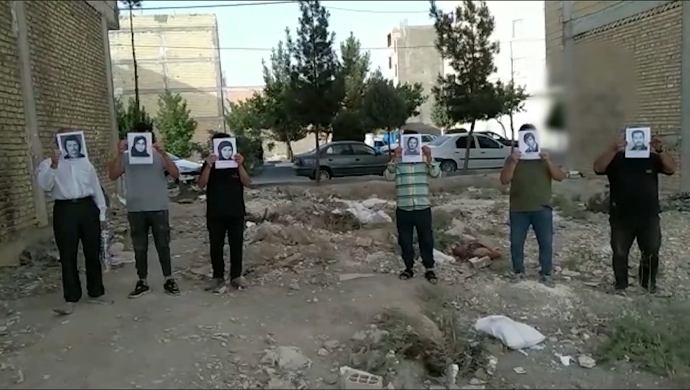As Iran marks the 34th anniversary of the massacre of more than 30,000 political prisoners in the summer of 1988, Resistance Units, a network of activists associated with the People’s Mojahedin Organization of Iran (PMOI/MEK), are honoring the memory of the martyrs of the Iranian Resistance and pledge to continue their path.
In the past week, members of the Resistance Units in different cities carried out activities to stress that the sacrifices made by the martyrs of the 1988 massacre have not been in vain and their memory lives through the rebellious generation of youth that are standing against the regime in every corner of the country.
“We will not forgive, nor forget,” the Resistance Units wrote on posters installed in different cities. The Resistance Units also pledged to bring the perpetrators of the 1988 massacre to justice, including regime president Ebrahim Raisi, who at the time was one of the members of the “Death Commission,” a group of so-called judges that sent the prisoners to their deaths after summoning them in minutes-long trials.
“The regime of execution and massacre will be overthrown and the people of Iran will be victorious,” read a poster that a Resistance Unit member held up in Urmia.
In Nayshabur, the Resistance Units posted a poster of Resistance Leader Massoud Rajavi, and pledged that the blood and sacrifices of the martyrs of the 1988 massacre will never be forgotten. Another poster stated that the sacrifices made by the martyrs of the 1988 massacre are inspiring the new generation of youths who are struggling for democracy and freedom in their country.
In Amol, a member of the Resistance Units visited the grave of one of the MEK martyrs and said, “We the MEK Resistance Units will continue the crimson path of the martyrs of the 1988 massacre until we overthrow this regime.”
Background
In 1988, then-regime supreme leader Ruhollah Khomeini issued a fatwa (religious order) to purge all prisons of political prisoners who supported the MEK. As a result of his order, more than 30,000 prisoners were hanged in the span of a few months. Many regime officials who currently hold positions of power played a key role in that crime against humanity.
The regime went to great lengths to hide and deny the 1988 massacre. The victims were buried in mass unmarked graves and the locations were kept secret. The families of the prisoners were kept in the dark about the fate of their loved ones. When they were eventually told about the execution of the prisoners, they were intimidated and explicitly instructed to not hold funerals for their loved ones.
Against the regime’s reign of terror and international silence toward the 1988 massacre, the Iranian Resistance launched a campaign of truth and justice as soon as survivors sent news of the massacre outside the prison.
MEK activists gathered documents and evidence of the 1988 massacre at great risks to their lives. At the same time, the Iranian Resistance launched a global campaign to raise awareness about the 1988 massacre. In 2022, for the first time, the 1988 massacre was recognized as a heinous crime after a Swedish court sentenced Hamid Noury, a former prison guard in Gohardasht prison, to life in prison for taking part in the executions.





